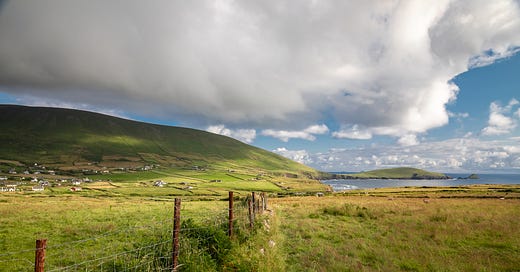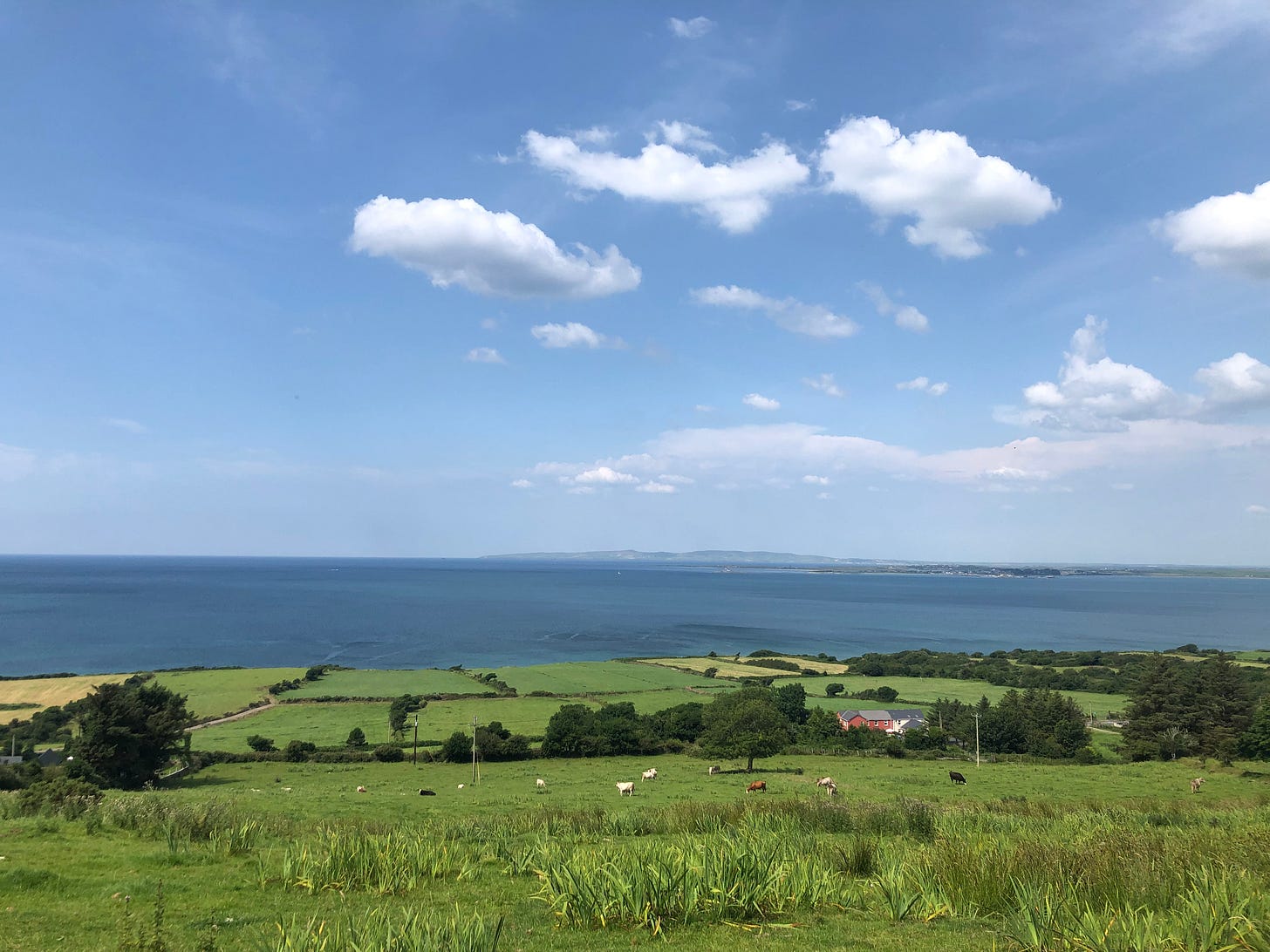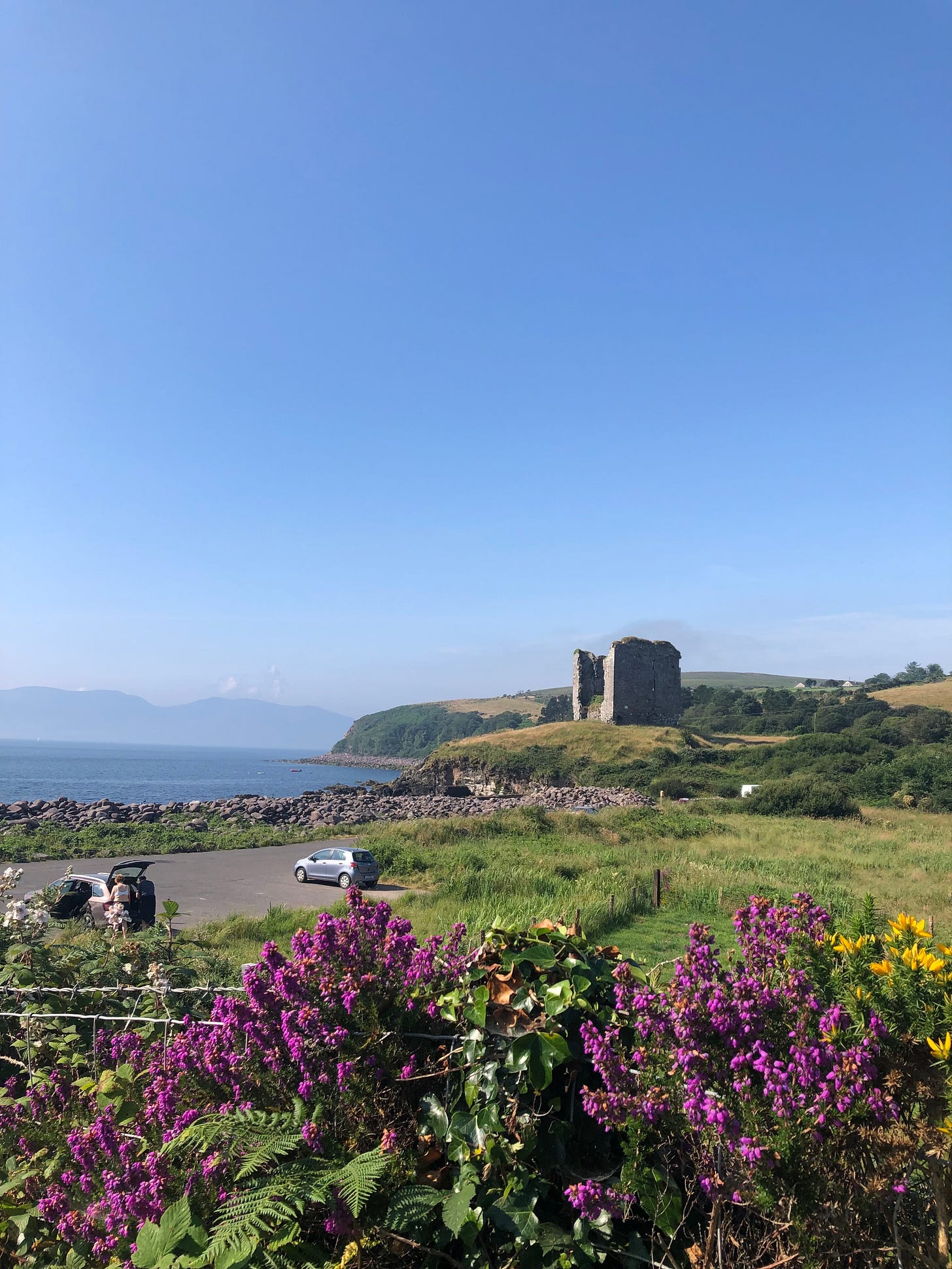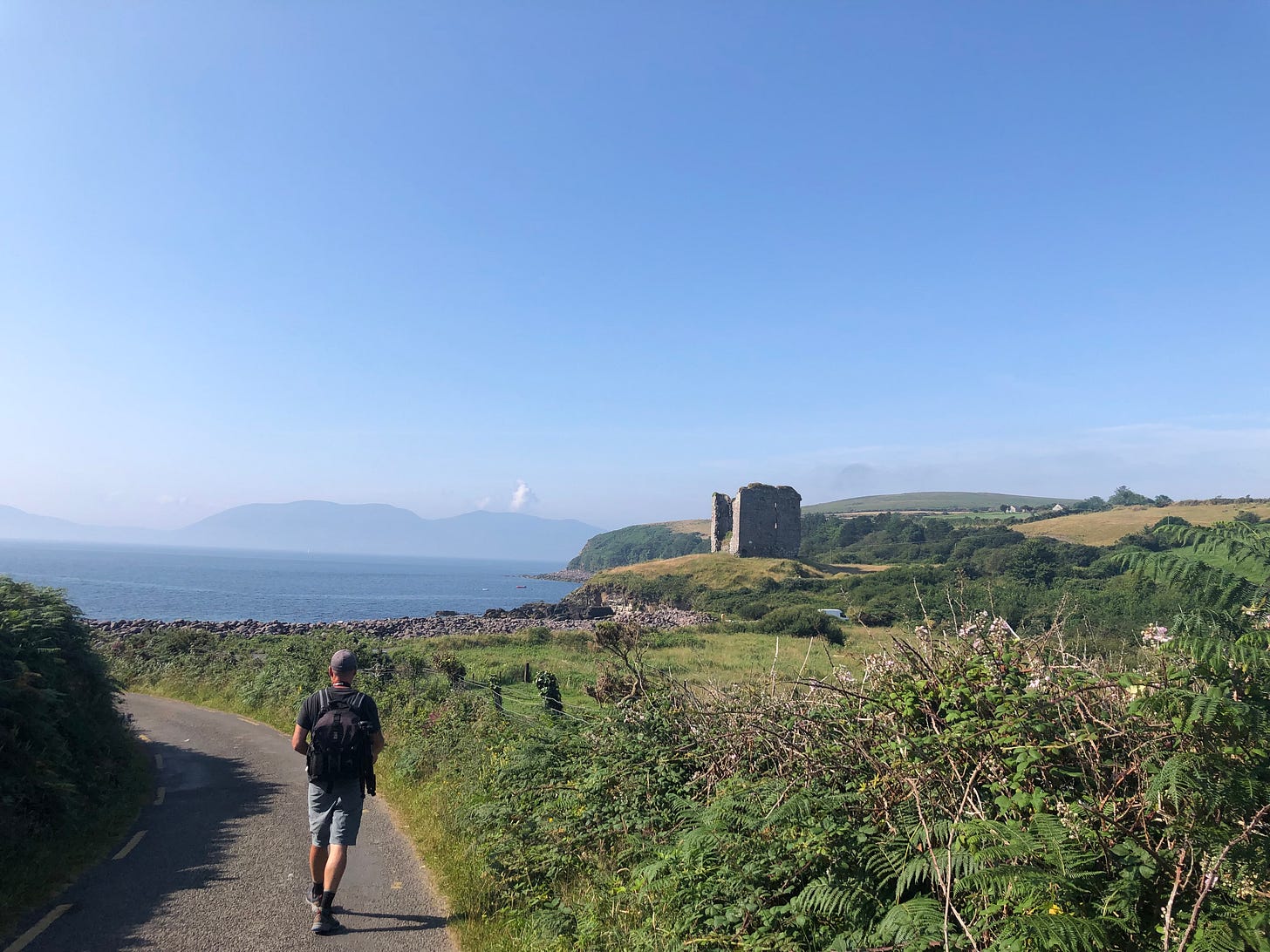Encountering the ghost of Cromwell along the Dingle Way
Plus, reflecting on hiking the Colorado Trail.
Of all of the countries we’ve hiked, we’ve never found one so welcoming as Ireland.
We arrived in Ireland in 2021 just as the world was opening up from the COVID-19 pandemic – barely two weeks after international travelers were permitted to return to Europe. We had chosen to hike the Dingle Way, a path that winds its way around Ireland’s western Dingle Peninsula two years before, but the pandemic had thrown a wrench into our yearly hiking ritual.
Let us tell you: there’s few things better in this world than walking into an Irish pub in the tiny seaside town of Camp and hearing a Kerry Irish accent shout out, “The Yanks are back!”
Near the town of Camp, Summer 2021. Credit: Devin Windelspecht.
But as much as we love Ireland, our Substack isn’t dedicated to how good it feels to down a pint of Guinness after a long day’s hike. (Well - not yet. Long Ways reviews brews on the trail incoming?) We’re writing about the moments of curiosity we found on the trail, the times when where we stopped and asked: why is this here?
A great example comes from day three on our hike along the Dingle Way, a few hours’ trek from the town of Annascaul. Here, on a rocky beach frequented by swimmers (we never could brave the cold northern Atlantic the way the Irish could), a single stone tower stands lonely over the waves.
This is Minard Castle, and its presence is a hint to a much darker time in Irish history than the casual beachgoers today would suggest.
Minard Castle, Summer 2021. Credit: Devin Windelspecht.
The name “Oliver Cromwell” might mean a lot to history buffs, but for the rest of us in the States his name is, at best, only a vague reminder of a civil war in England and a brief time when Britain was without a monarch.
In Ireland, he’s remembered as one of the most brutal invaders in a long line of English colonizers. His invasion alone might have seen up to 20% of Ireland killed by war, famine, and plague, according to some historians.
County Kerry, home to the Dingle Peninsula where we hiked, has a reputation for being among the most rugged and difficult to control counties of Ireland. It’s where survivors of the Spanish Armada sheltered amongst friendly Catholics during the country’s ill-fated invasion of England, for instance, and was a center of resistance during the 1641 Irish Rebellion. Later on, the rugged mountainous country would be a Republican heartland for the (old) IRA during the Irish War of Independence and subsequent Irish Civil War.
In the mid-1600s, County Kerry was the last holdout against Oliver Cromwell’s conquest of Ireland, with castles springing up all along the coasts to defend against the invasion. Minard Castle was one of these castles, and it didn’t last long.
According to (perhaps legendary) history, Minard Castle was the site of Walter Hussey of Castlegregory’s last stand. Among the last Anglo-Irish of County Kerry resisting Cromwell’s invasion, Hussey posted up at Minard Castle after most of the county had fallen, promoting Cromwell to send warships to root him out. Following the subsequent bombardment of the castle, Hussey’s body was said to only be recognizable by a single, distinctive red sock.
The castle was later rebuilt by Cromwell and used to garrison his soldiers, who remained watchful for further rebellions against English rule. Today it lies in ruins, reduced in stature not by war but by local towns salvaging its stone to build nearby houses and walls.
Walking to Minard Castle. Summer 2021. Photo Credit: Devin Windelspecht.
Walking through Ireland is an incredibly peaceful experience: often, it’s just you, a road through the hills, a few meandering sheep and the hint of the ocean over the next rise (and yes, it does very much feel like walking through the Shire).
But this island has a long, complex and often tragic and violent history, too. It’s not just Cromwell’s invasion of Ireland, but also the Great Hunger (also known as the Irish Famine), and of course, the Troubles in Northern Ireland, where over 3000 people were killed in a 30-year conflict over the political future of the northeast corner of the island. (One of our number, Devin, worked at a peace center in Northern Ireland during college, and recommends watching both Say Nothing and Derry Girls if you’re interested in this point in Irish history).
Ruins like Minard Castle, then, aren’t just old castles that happen to have a pretty seaside view – they’re small reminders of a much darker time in Ireland’s history marked by an often brutal colonialism that Ireland has made great pains to move beyond.
Today, as many Americans like us with Irish heritage can attest, there’s something important, too, that comes with returning to a thriving country that your ancestors once had fled violence or famine from over a century ago, and having a pint in a small pub overlooking a now peaceful countryside.
Near Dunquin, Summer 2021. Photo Credit: Eric Weber.
Hiking the Dingle Way
Here’s some pieces of advice we have for hiking the Dingle Way:
Bring clothes for all weather. On our hike in July, we navigated both heat stroke and risks of hypothermia, as the country experienced a massive heat wave, followed by days of rain (and even, one day, snow while atop one mountain).
Spend a down day in Dingle. The seaside town is the Dingle Way’s largest, and has plenty of pubs, fish and chips shops, and even an outdoor goods store if you need some mid-trail updated to you rain gear (we know we did).
Learn a few words of Irish. Dingle is one of the few gaelteachts, or places where Irish is still spoken as a first language, in the country. Everyone speaks English, but a few phrases will go a long way (and help reading some road signs, which here are only in Irish!)
Take a boat ride to Great Blasket Island. We didn’t manage this, but the island (with tours from Dingle) has a special place in Irish language and literature for its small village of native Irish speakers who lived on the island until the 1950s.
The Long Ways Podcast
Our latest podcast talks to Devin as he reflects on hiking the Colorado Trail when he was 18, his first long-distance hike, along with three of his high school friends. It’s an experience that ignited his love for long trails, and set into motion a series of events that would lead to The Long Ways today. Give it a listen:
Keep up to date
We’re enthusiastic of forming a community of hikers, travelers, and those curious about the world. Share the link with your friends and family, and keep an eye out for our next monthly newsletter in April.
You can also follow us on our podcast by subscribing on Apple Podcast or Spotify. Follow us on Instagram for more real-time updates, especially live from the trail (this year, we’ll return to Scotland to hike the Great Glen Way across the Scottish Highlands).
Finally, consider following our sister organization, Inspire EdVentures, as it develops innovative ways of bring science education to learners of all ages.








I'll definitely look up the podcast - thank you for sharing!
Keep these posts coming! Its going to be a busy hiking season for us!